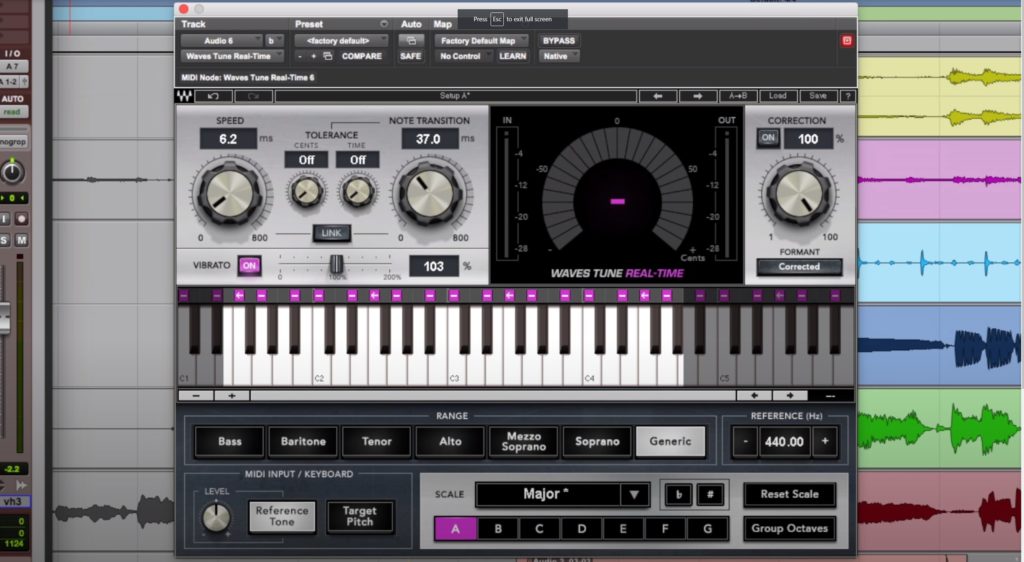An Introduction to Auto-Tune: Basics of Vocal Pitch Correction

Auto-Tune is a digital audio processing know-how broadly used within the music business to appropriate and manipulate the pitch of vocal performances. Developed by Antares Audio Technologies, Auto-Tune has become synonymous with pitch correction and inventive vocal effects. Here's an introduction to the fundamentals of Auto-Tune and its software in vocal pitch correction:
**1. Pitch Correction:
a. How Why do singers use autotune :
Auto-Tune makes use of advanced algorithms to research the pitch of an incoming vocal signal.
It compares the detected pitch to a user-defined reference pitch or musical scale.
If there's a deviation from the reference pitch, Auto-Tune mechanically corrects the pitch to deliver it according to the desired tonality.
b. Correction Speed:

The correction velocity determines how shortly Auto-Tune adjusts the pitch. Faster settings lead to more instant corrections, whereas slower settings create a smoother, more natural-sounding impact.
c. Real-Time vs. Post-Processing:
Auto-Tune can function in real-time throughout stay performances or as a post-processing impact within the studio throughout recording or mixing.
**2. User-Defined Settings:
a. Scale and Key:
Users can specify the musical scale and key of the track. This information helps Auto-Tune make correct pitch corrections primarily based on the context of the music.
b. Customization:
Auto-Tune presents customizable parameters, permitting customers to tailor the pitch correction to their preferences and the particular wants of a efficiency.
**3. Creative Effects:
a. Stylized Vocal Choices:
While initially designed for pitch correction, Auto-Tune gained reputation for its artistic potential. Artists intentionally use exaggerated pitch correction to achieve the distinctive "auto-tuned" sound.
b. Formant Shifting:
Some variations of Auto-Tune embody formant shifting capabilities, permitting for manipulation of the vocal timbre whereas preserving pitch correction.
**4. Real-Time Performance:
a. Live Pitch Correction:
Auto-Tune is often used throughout reside performances to make sure pitch accuracy, particularly in challenging acoustic or monitoring circumstances.
b. Reducing Performance Pressure:
It helps alleviate some strain on live performers, permitting them to concentrate on other aspects of their performance without being overly involved about pitch perfection.
**5. Industry Impact:
a. Shaping Music Genres:
Auto-Tune has significantly influenced the sound of contemporary music, contributing to the evolution of various genres.
b. Mainstream Recognition:
The distinctive Auto-Tune impact has become recognizable in mainstream culture, related to particular artists and musical types.
**6. Criticism and Controversy:
a. Overuse Concerns:
Auto-Tune has faced criticism for its potential to be overused, resulting in a homogenized and artificial sound in music.
b. Loss of Authenticity:
Some argue that excessive use of Auto-Tune can lead to a loss of the natural expressiveness and authenticity of a musician's efficiency.
**7. Ongoing Evolution:
a. Technological Advancements:
Auto-Tune continues to evolve with developments in digital signal processing and music technology, offering new options and capabilities.
b. Integration with DAWs:
Auto-Tune is integrated into many digital audio workstations (DAWs), making it a seamless device for music producers.
In summary, Auto-Tune serves as a versatile software for vocal pitch correction, providing each technical correction and inventive expression possibilities. Its impression on the music trade is profound, shaping the sound of latest music and providing artists with revolutionary methods to discover vocal aesthetics..
